
English Instructional Plan – Using and Gathering Information with Text Features
- Subject:
- English
- Reading
- Material Type:
- Lesson Plan
- Author:
- VDOE Project Team
- Date Added:
- 04/20/2022

English Instructional Plan – Using and Gathering Information with Text Features

English Instructional Plan – Using the GIST method to summarize 6-8

English Instructional Plan – Utilizing Context Clues to Determine Connotation
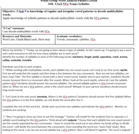
This lesson consists of ...-a word list to id where the break would occur to id the two syllables, indicate the VCe pattern and blend the syllables together to say the word-Chunk, Chunk Blend Word Cards to read words by reading each syllable and then blending-Short story to read and do a word hunt

This video is part of the Continue to Know with WHRO TV series. Watch Joy Phillips teach about different types of genres in literature.
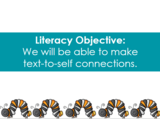
Teachers will be able to use this lesson virtually or in-person! This Google Slide deck lesson can also be downloaded as a PowerPoint! Speaker notes are included which make it easy for teachers or substitutes to teach this lesson!Read Aloud: The VERY Impatient Caterpillar by Ross Burach*Literacy Objective: Students will be able to make text-to-self connections.*Science Objective: Students will be able to identify the stages of the butterfly life cycle.*Art Objective: Students will be able to draw a butterfly and show understanding of symmetry and warm and cool colors. Hampton Oaks Elementary School (Kari Nugent, Annie Schmidt, Lindsey Bruce, Melissa DiAscro, & Rebecca Fausett)
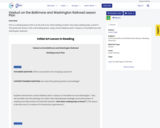
This is a reading lesson that is at the end of an initial reading module "How does reading help us learn?". This particular lesson is the culminating lesson using James Salisbury Burt's Viaduct on the Baltimore and Washington Railroad.
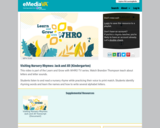
This video is part of the Learn and Grow with WHRO TV series. Watch Brandon Thompson teach about letters and letter sounds.

A vocabulary unit with the words: adversary, destination, hasten, exasperation, and multitude; the roots -gress- and -rupt-, and the prefix anti-. Includes a presentation and packet.

English Instructional Plan – Vocabulary and Author's Tone

English Instructional Plan – Vocabulary and Figurative Language 6-7

This video is part of the Learn and Grow with WHRO TV series. Watch Haley Cooprider teach about identifying rhyming words and the letters g, e, and z.
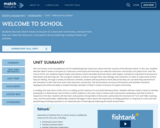
This unit serves as the foundational unit for establishing both classroom culture and the routines of the literature block. In this unit, students discover what it means to be part of a classroom community and how they can make the classroom community a fun place to be. Over the course of the unit, students explore hopes and dreams, how to be polite and treat others with respect, and why it's important to be proud of themselves and who they are. The unit gives students a chance to project their own feelings onto characters in order to make sense of how they are feeling. Through a variety of extension activities, students will be pushed to think about how they can use what they learned from the characters in their own lives and in the classroom community. The final products of many of the lessons and activities should be displayed and reinforced daily as student-friendly reminders of what it means to be part of a joyful community.
In reading, the main focus of the unit is on setting up the routines of a successful literature block. Students will learn what it means to actively participate in a Read Aloud, how to listen to other students in the class, how to interact with and practice vocabulary, and how to write in response to the text. Students will also learn and practice strong habits of discussion, particularly the structures for Turn and Talks: tracking, voice, and focused bodies. Additionally, students will begin to learn about the importance of asking questions in response to a text and how questioning and being inquisitive is an important part of learning and exploring the world around them.
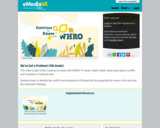
This video is part of the Continue to Know with WHRO TV series. Watch Jadah Jones teach about conflict and resolution in fictional texts.
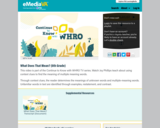
This video is part of the Continue to Know with WHRO TV series. Watch Joy Phillips teach about using context clues to find the meaning of multiple meaning words.
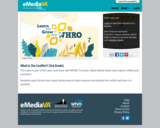
This video is part of the Learn and Grow with WHRO TV series. Watch Nicole Neice teach about conflict and resolution.
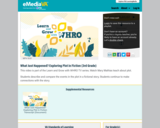
This video is part of the Learn and Grow with WHRO TV series. Watch Mary Mathias teach about plot.

In this unit, students read a collection of texts focused on building an understanding of what it means to be a good friend. This unit, in connection with beginning-of-the-year culture-building activities, will set a strong foundation for building social-emotional awareness within students as they navigate making new friendships within the classroom. This unit will also serve as the launch unit of the year-long theme: what it means to be a good person within a community. Over the course of the year, students will deepen their understanding of what it means to be a good person and grow up in different communities, part of which involves being a good friend.
This unit will serve as the foundational unit for creating a strong read aloud and discussion culture. Building on what students learned in K2, students will practice asking and answering questions about key details, particularly characters, in partners, individually, and through discussion. Students will also learn and practice strong habits of discussion, particularly structures for turn and talks, tracking, voice, and focused bodies. Additionally, students will be challenged to think about characters, what they are like as a person, and what they learn in the story, by noticing the details an author includes in the words and the pictures. Unlike kindergarten units, in this unit students will begin to build connections across texts and build a deeper understanding of the unit theme of friendship.
In writing, students will write daily in response to the text. The focus for this unit is on building student stamina and routines in regard to writing about reading. In Kindergarten, students wrote daily in response to the text, with an emphasis on both the illustration and words. Over the course of the unit, students should begin to focus more on the words they are writing and less on the illustration to convey ideas about the text. However, they should always be encouraged to start with a quick sketch to get their ideas down.
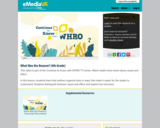
This video is part of the Continue to Know with WHRO TV series. Watch Jadah Jones teach about cause and effect.
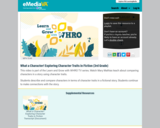
This video is part of the Learn and Grow with WHRO TV series. Watch Mary Mathias teach about comparing characters in a story using character traits.